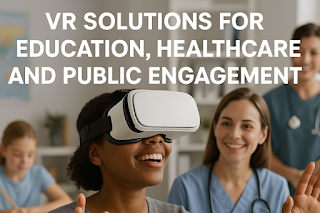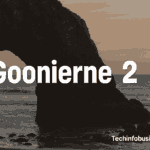The Evolution of VR Technology
The journey of VR from a gaming-centric technology to a multifaceted tool for various industries has been fueled by rapid technological advancements. High-resolution displays and sophisticated motion tracking systems have enhanced the realism and immersion of VR experiences. These improvements are making VR more appealing and practical for educational and professional use.
Moreover, the development of wireless VR headsets has increased accessibility, allowing for easier integration into various settings. As the technology becomes more portable and user-friendly, its applications continue to expand, paving the way for innovative uses in fields beyond gaming.
Collaborations and Partnerships
The rise of purpose-driven VR solutions has been significantly bolstered by collaborations between tech companies, educational institutions, healthcare providers, and industry leaders. These partnerships aim to create customized VR applications that address specific needs and challenges within different sectors. By pooling resources and expertise, stakeholders are accelerating the development and implementation of effective VR solutions.
Such collaborations are not only driving technological advancements but also fostering a culture of innovation and experimentation. As more organizations recognize the potential of VR, these partnerships are expected to grow, further expanding the scope and impact of VR applications.
Shifting Perceptions and Cultural Acceptance
As VR continues to permeate various sectors, there is a growing shift in how the technology is perceived culturally. Initially seen as a niche tool for gamers, VR is increasingly recognized for its potential to address real-world issues. This shift is fostering greater acceptance and enthusiasm for VR, encouraging more institutions and individuals to explore its capabilities.
The cultural acceptance of VR is further supported by positive user experiences and success stories across different industries. As more people experience the benefits of VR firsthand, the technology’s reputation as a valuable tool for learning and engagement continues to strengthen.
VR in Education: Metaverse Schools
Education is one of the most promising fields for VR implementation. The concept of metaverse schools is becoming a reality, where virtual classrooms offer students immersive learning experiences that transcend traditional teaching methods. Students can explore historical events, conduct virtual science experiments, and even engage in collaborative projects with peers from around the world.
Expanding Learning Horizons
VR in education is breaking down geographical and resource barriers, providing students with access to a wealth of knowledge and experiences that were previously out of reach. Virtual field trips allow students to explore ancient civilizations, distant planets, and natural wonders without leaving the classroom. This expanded access to information fosters curiosity and a deeper understanding of diverse subjects.
In addition to virtual field trips, VR can simulate complex concepts and processes that are difficult to visualize through traditional methods. For example, students can explore the inner workings of the human body or the mechanics of a volcanic eruption in a highly detailed and interactive manner. These immersive experiences enhance comprehension and retention, making learning more effective and enjoyable.
Personalized Learning Experiences
One of the key advantages of VR in education is its ability to accommodate diverse learning styles and paces. VR platforms can be tailored to provide personalized learning experiences that cater to individual student needs. Adaptive learning algorithms can adjust the difficulty and content based on a student’s progress, ensuring that each learner receives the appropriate level of challenge and support.
Furthermore, VR allows for differentiated instruction, where teachers can create customized lessons and activities that align with each student’s strengths and interests. This personalized approach not only enhances engagement but also empowers students to take ownership of their learning journey, fostering a sense of autonomy and motivation.
Preparing Students for the Future
Integrating VR into educational settings prepares students for the digital and technological landscape they will encounter in their future careers. Familiarity with VR and related technologies equips students with valuable skills, such as digital literacy, problem-solving, and critical thinking. As more industries adopt VR for various applications, students who have experience with this technology will be better positioned to succeed in the workforce.
Moreover, VR promotes collaboration and communication skills by facilitating group projects and discussions in virtual environments. These soft skills are essential in the modern workplace, where teamwork and effective communication are highly valued. By cultivating these abilities, VR education empowers students to thrive in a rapidly changing world.
VR in Medical Training: A New Frontier
In the medical field, VR is paving the way for more effective and risk-free training. Medical students and professionals can now practice complex procedures in a virtual environment, allowing for repeated practice without the risk of harm to real patients. This not only enhances skill acquisition but also boosts confidence and competence.
Simulated Clinical Scenarios
VR offers medical trainees the opportunity to engage in simulated clinical scenarios that mimic real-life situations. These simulations provide a safe and controlled environment for learners to practice diagnosis, treatment planning, and procedural skills. By encountering a wide range of clinical cases in VR, trainees can develop a comprehensive understanding of medical conditions and treatment protocols.
The realism of VR simulations is continually improving, with advancements in haptic feedback and graphics creating more lifelike experiences. This heightened realism allows trainees to hone their skills and make critical decisions as they would in actual clinical settings. As a result, VR is becoming an indispensable tool for medical education and training.
Reducing Training Costs and Risks
Traditional medical training often involves high costs and logistical challenges, such as the need for specialized equipment and access to patients. VR addresses these issues by providing a cost-effective alternative that reduces the need for physical resources and facilities. Virtual simulations can be conducted anytime and anywhere, making training more accessible and flexible.
Additionally, VR minimizes the risks associated with hands-on training, where errors can have serious consequences for patients. By practicing in a virtual environment, trainees can make mistakes and learn from them without jeopardizing patient safety. This risk-free practice builds confidence and competence, ultimately leading to better patient care.
Enhancing Patient Education and Engagement
VR is not only transforming medical training but also revolutionizing patient education and engagement. Patients can use VR to gain a better understanding of their medical conditions and treatment options. Virtual models and simulations help demystify complex medical information, empowering patients to make informed decisions about their care.
Moreover, VR can enhance patient engagement by offering immersive experiences that encourage adherence to treatment plans and lifestyle changes. For example, VR-based rehabilitation programs can motivate patients to complete exercises by providing interactive and enjoyable activities. By improving patient understanding and involvement, VR contributes to more positive health outcomes.
VR in Industry Training: Enhancing Workforce Skills
Industries are increasingly adopting VR solutions for employee training. From manufacturing to construction, VR enables workers to practice skills and procedures in a controlled, virtual environment. This approach not only reduces training costs but also minimizes workplace accidents by allowing employees to familiarize themselves with equipment and protocols before entering real-world settings.
Streamlining Onboarding and Skill Development
VR is streamlining the onboarding process for new employees by providing interactive and engaging training modules. New hires can explore virtual environments that replicate their actual workspaces, allowing them to become familiar with their roles and responsibilities quickly. This hands-on approach accelerates the learning curve, enabling employees to become productive members of the team more rapidly.
In addition to onboarding, VR facilitates ongoing skill development by offering continuous training opportunities. Employees can practice complex tasks and procedures in VR, receiving instant feedback and guidance. This iterative learning process helps workers refine their skills and stay up-to-date with industry standards and advancements.
Improving Safety and Compliance
Safety is a top priority in industries such as construction, manufacturing, and transportation, where employees often face hazardous conditions. VR enhances safety training by simulating dangerous scenarios in a risk-free environment. Workers can practice emergency response procedures, equipment handling, and safety protocols without exposing themselves to actual danger.
Furthermore, VR training ensures compliance with industry regulations and standards by providing consistent and standardized instruction. Employees can complete mandatory safety courses and certifications through VR, ensuring that they are well-prepared to adhere to safety guidelines and protocols. This proactive approach reduces the likelihood of accidents and enhances workplace safety.
Fostering Innovation and Problem-Solving
VR encourages innovation and problem-solving by providing a platform for experimentation and creativity. Employees can test new ideas, techniques, and processes in a virtual environment before implementing them in the real world. This iterative approach allows for rapid prototyping and refinement, leading to more efficient and effective solutions.
Moreover, VR fosters collaboration and teamwork by enabling employees to work together in virtual spaces, regardless of their physical locations. Teams can brainstorm, design, and execute projects collaboratively, leveraging diverse perspectives and expertise. This collaborative approach enhances problem-solving capabilities and drives innovation within organizations.
VR Kiosks and Virtual Events: Engaging the Public
VR kiosks are becoming a popular tool for public engagement, offering interactive experiences in museums, exhibitions, and other public spaces. These kiosks allow visitors to explore detailed VR walkthroughs of exhibits, providing a deeper understanding and appreciation of the content.
Enhancing Museum and Exhibition Experiences
In museums and exhibitions, VR hub offer visitors an immersive way to explore and interact with exhibits. These interactive experiences provide a new level of engagement, allowing visitors to delve deeper into the subject matter. For instance, a VR kiosk in a history museum might transport visitors to a pivotal moment in time, offering a firsthand perspective of historical events.
The use of VR in public spaces also caters to diverse audiences, accommodating different learning preferences and interests. By providing a variety of interactive experiences, museums and exhibitions can attract a broader range of visitors and enhance their overall experience. This increased engagement fosters a deeper connection with the content and encourages repeat visits.
Expanding Accessibility and Inclusivity
Virtual reality kiosks and virtual events are expanding accessibility by making cultural and educational content available to a wider audience. People with mobility challenges or those living in remote areas can participate in virtual events and explore exhibits from the comfort of their homes. This accessibility ensures that everyone has the opportunity to engage with cultural and educational experiences, regardless of their physical limitations.
Moreover, VR technology can accommodate various languages and accessibility needs, such as subtitles and audio descriptions. This inclusivity ensures that VR experiences are welcoming and accessible to all individuals, promoting diversity and inclusion in public engagement.
Creating Global Connections
Virtual events powered by VR are breaking down geographical barriers, enabling people from around the world to connect and participate in shared experiences. Whether it’s a virtual concert, conference, or exhibition, VR allows attendees to engage with content and interact with others in a virtual space. This global reach enhances cultural exchange and understanding, fostering a sense of community and connection among participants.
Furthermore, virtual events provide organizations with the opportunity to reach a wider audience and expand their impact. By offering immersive and engaging experiences, organizations can attract participants from different regions and backgrounds, increasing their visibility and influence on a global scale.
Challenges and Considerations
While the potential of VR in these sectors is vast, there are challenges that need to be addressed. The cost of VR equipment and development can be prohibitive for some institutions. Additionally, there is a learning curve associated with the technology, requiring both educators and learners to adapt to new ways of interaction.
Addressing Cost and Resource Constraints
One of the primary challenges in implementing VR solutions is the cost of equipment and development. High-quality VR headsets, software, and infrastructure can be expensive, making it difficult for some institutions to invest in the technology. To overcome this barrier, organizations can explore funding opportunities, partnerships, and shared resources to offset costs and make VR more accessible.
Furthermore, as VR technology continues to advance, the cost of equipment is expected to decrease, making it more affordable for a wider range of users. This trend, combined with the development of more cost-effective solutions, will help alleviate financial constraints and facilitate broader adoption of VR across sectors.
Navigating the Learning Curve
The introduction of VR technology requires users to adapt to new ways of interaction and engagement. Educators, trainers, and learners may face a learning curve as they become familiar with VR interfaces and functionalities. To address this challenge, comprehensive training and support should be provided to ensure a smooth transition and effective use of VR solutions.
Additionally, user-friendly interfaces and intuitive design can help minimize the learning curve and enhance user experience. By prioritizing ease of use and accessibility, developers can create VR applications that are approachable and enjoyable for all users, regardless of their technical expertise.
Ensuring Privacy and Data Security
Privacy and data security are critical considerations in the development and implementation of VR solutions. VR experiences often involve the collection and processing of sensitive information, raising concerns about data protection and user privacy. To address these concerns, robust security measures and compliance with regulations must be prioritized to safeguard user data.
Organizations should implement encryption, authentication, and access controls to protect sensitive information and prevent unauthorized access. Additionally, transparent data practices and clear communication with users about data usage and security measures can help build trust and confidence in VR solutions.
The Future of VR: A New Reality
As VR technology continues to advance, its applications in education, healthcare, and public engagement are expected to grow exponentially. The development of more affordable and accessible VR solutions will further democratize its use, making it a staple in these industries.
Anticipating Technological Advancements
The future of VR is poised for significant advancements, with ongoing research and development driving innovation. Emerging technologies, such as haptic feedback, eye-tracking, and spatial audio, are enhancing the realism and interactivity of VR experiences. These advancements will create even more immersive environments, offering users a heightened sense of presence and engagement.
Furthermore, the integration of artificial intelligence and machine learning with VR is expected to revolutionize personalized experiences. AI-powered algorithms can analyze user behavior and preferences to tailor VR content to individual needs, providing customized and impactful experiences.
Expanding Applications and Impact
As VR technology becomes more accessible and sophisticated, its applications will continue to expand across various sectors. In education, VR will enable more interactive and collaborative learning experiences, transforming traditional teaching methods. In healthcare, VR will facilitate advanced training, patient education, and therapeutic interventions, improving health outcomes.
Public engagement will also benefit from VR, with virtual events and interactive experiences reaching wider audiences and fostering global connections. As these applications grow, the impact of VR on society will become more pronounced, driving positive change and innovation across industries.
Embracing a New Reality
The evolution of VR from a gaming novelty to a transformative tool underscores its potential to reshape our reality. By embracing this technology, organizations and individuals can unlock new possibilities for learning, training, and interaction, paving the way for a more connected and informed world. As we continue to explore and harness VR, the opportunities for creating meaningful and impactful experiences are boundless.
In conclusion, the transformative power of VR extends beyond entertainment, offering innovative solutions for education, healthcare, and public engagement. As more purpose-driven VR applications emerge, we are witnessing a paradigm shift in how knowledge is imparted, skills are honed, and the public is engaged. By embracing this technology, we unlock new possibilities for learning, training, and interaction, paving the way for a more connected and informed world.
Conclusion
The transformative power of VR extends beyond entertainment, offering innovative solutions for education, healthcare, and public engagement. As more purpose-driven VR applications emerge, we are witnessing a paradigm shift in how knowledge is imparted, skills are honed, and the public is engaged. By embracing this technology, we unlock new possibilities for learning, training, and interaction, paving the way for a more connected and informed world.
In conclusion, the evolution of VR from a gaming novelty to a tool for positive change underscores its potential to reshape our reality. As we continue to explore and harness this technology, the opportunities for creating meaningful and impactful experiences are boundless.



